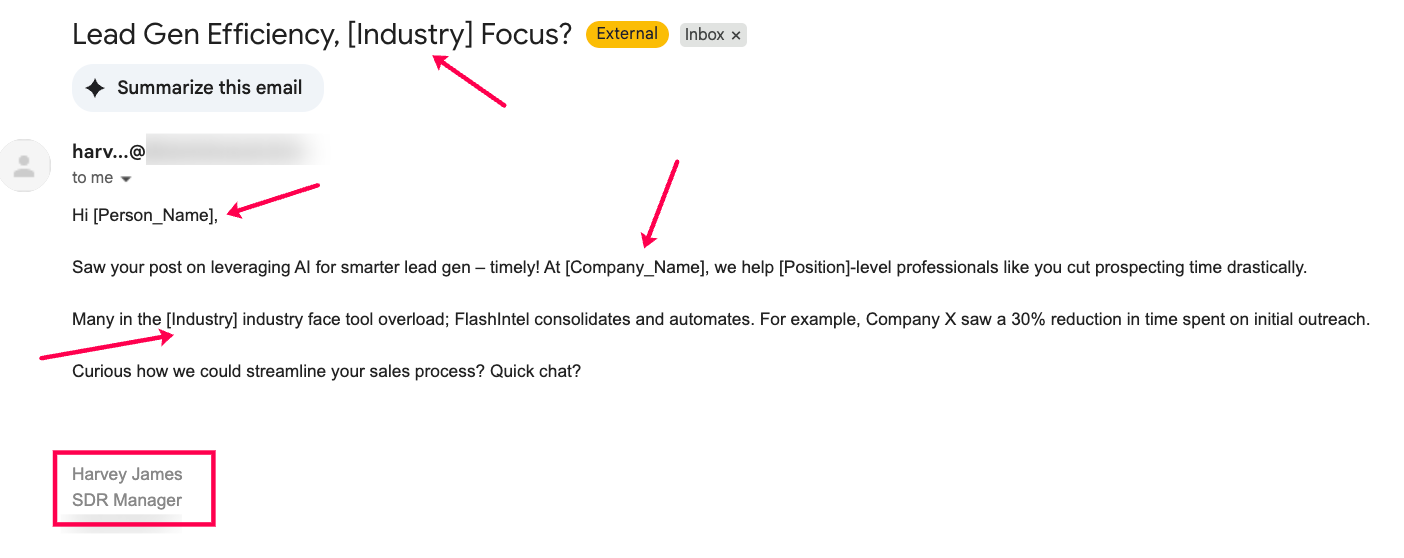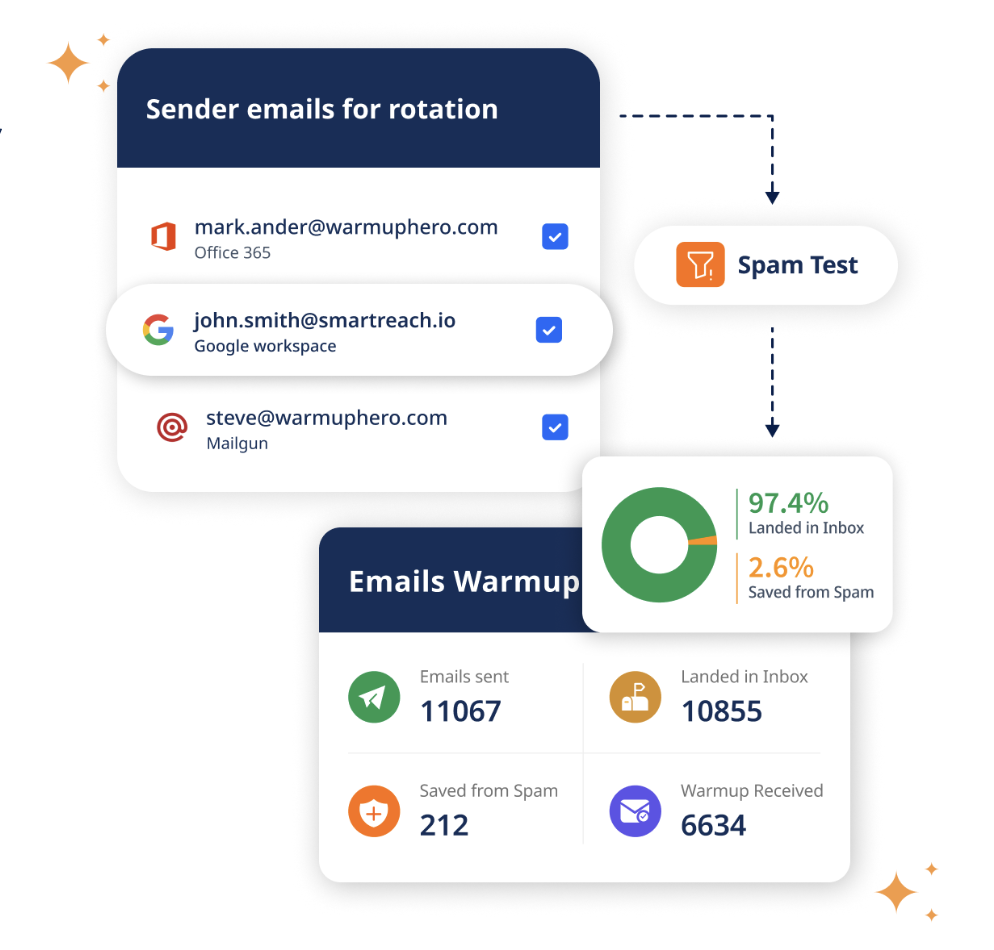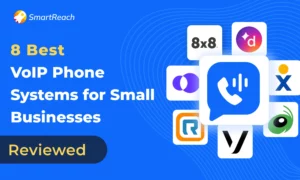Struggling with Spam? Here’s Why Unsolicited Emails Fail
Unsolicited emails, also known as cold emails or spam often end up in spam folders.
But why does this happen, and what can you do to avoid it?
In this article, we break down the technical reasons, human behavior factors, and email service provider rules that cause unsolicited emails to land in spam.
What are unsolicited emails?
Unsolicited emails are emails sent to recipients without their explicit permission. These include:
- Cold emails to prospects who’ve never heard of you
- Promotional emails to purchased or scraped email lists
- Bulk messages sent without proper segmentation or personalization
While not all unsolicited emails are illegal (like cold B2B outreach), they are often flagged as spam due to how they’re sent and how people react to them.
Why do unsolicited emails hit the spam folder?
Here are the core reasons why unsolicited emails often land in spam rather than the primary inbox of the recipients.
#1. No consent for email opt-in
Mailbox providers like Gmail, Outlook,Yahoo etc. want to protect users from unwanted emails.
If their algorithms detect that your email is being sent without recipient consent, it increases the likelihood of being flagged as spam by the in-built email spam filters.
How they detect this:
- Recipients manually mark your email as spam.
- Your email is sent to many people who don’t open, click, or engage.
- Your email domain has no past interaction with the recipient’s domain.
- Your email lacks any context to the recipient
#2. Low email engagement signals
Email engagement is one of the top factors inbox providers use to determine inbox placement.
If your cold email receives very few opens, replies, or clicks and especially if recipients delete the email without reading, it’s a clear signal of low engagement.
This often leads to –
- Email services assume low engagement means your email isn’t relevant.
- Poor email engagement reduces sender reputation.
- Future emails are more likely to go straight to spam.
#3. High email spam complaints
If even a small percentage of your email recipients click “Report Spam,” that’s a huge red flag to email service providers.
While most email service providers aim to keep spam complaint rates below 0.1% for efficient email deliverability, anything above this will hurt your domain reputation.
To avoid the spam problem, check out the guide below for a detailed deep dive.
Read more: How to Prevent Recipients from Marking Emails as Spam?
#4. Violation of email compliance laws
Unsolicited emails that don’t follow email legal regulations can be marked as spam manually or even land you in legal trouble.
If you are an unsolicited business email to someone without a legitimate reason to contact under GDPR (i.e., “legitimate interest”), you may land in a big legal trouble. (bigger than just ‘spam complaints’!)
I have discussed about different email compliance laws and how to follow them effectively in a separate article.
Check out: Email Compliance Laws: Definitive Legal Guide for Marketers
#5. Email sent from a poor-quality domain or IP address
Sending emails from a new domain, unverified IP, shared IP address or previously blacklisted domain can tank your email deliverability.
This is also true for you if you are sending emails from a free email account to the business email addresses.
Most spam filters check:
- Domain reputation (via DNSBLs and blacklists)
- SPF, DKIM, and DMARC authentication
- Bounce rates and spam complaint history
If your domain lacks these technical setups, spam filters are more likely to block you as a sender or flag your emails.
If you’ve not set them yet, here’s a step-by-step guide for setting these records “How to set up SPF, DKIM & DMARC to keep emails out of spam”
#6. Email lacks personalisation
Sending the same templated email to a large list of people without tailoring it to their role, company, or pain points is another spammy behavior.
It makes the email unsolicited and irrelevant, pushing it to the spam filter.
This email I recently received is a good example of such spammy behaviour.

What spam filters look for:
- Generic subject lines like “Get this offer now!”
- Spam trigger words (e.g., “free,” “act now,” “guaranteed”)
- Lack of personalization tokens (like name, company, role)
These elements are all part of spam filter algorithms that scan your email body, header, and subject line
What happens when your emails go to spam?
- Lower Response rates: Your emails don’t get seen.
- Domain reputation damage: All future campaigns suffer.
- Wasted resources: Time, tools, and manpower go to waste.
- Legal risks: Non-compliant unsolicited emails can result in fines.
How can you prevent unsolicited emails from going to spam?
First advice: DO NOT send unsolicited email blasts.
Get consent where possible: use lead magnets, newsletters, webinars to build opt-in lists.
You can check this article first to learn different ways of collecting email consent “How to Get Proper Consent Before Sending Emails? [Full Guide]”
When users expect your email, they’re more likely to engage.
And that means better inbox placement, stronger reputation, and long-term ROI.
If you’re still sending unsolicited email in the form of cold outreach, follow these best practices –
- Use a reputed cold email automation platform like SmartReach.io for sending cold emails at scale.
- Warm up your email domains domain/IP before sending at scale.
- Avoid spam words and clickbait subjects in the emails
- Authenticate your email domains with SPF, DKIM, and DMARC.
- Clean your email list weekly or monthly.
- Add an unsubscribe link in every email
- Personalize emails with first names, context, and company relevance.
- Track email engagement rates and clean your email lists frequently
Remember: inbox placement ≠ delivery.
Sometimes, even if an email is technically “delivered,” it may still land in spam.
For the best cold email campaign performance, use SmartReach.io which has a built-in email deliverability suite for protecting your cold emails from landing in SPAM.

- It automatically validates email list before starting a campaign,
- Runs pre-campaign spam tests (checking SPF, DKIM, DMARC, formatting, broken links, and blacklist status), and
- monitors global blacklists while auto-pausing risky sends, helping ensure you’re not unknowingly triggering these spam signals.
Try SmartReach.io for FREE (no credit card needed)
Frequently Asked Questions (FAQs)
Q: Why do cold emails often go to spam?
Because the recipient didn’t ask for the email, spam filters treat it as unwanted. Also, poor setup, low engagement, or shady content can make it look like spam.
Q: What is the most common reason emails are marked as spam?
Misleading subject lines like “Re:” or “Urgent” often trigger spam filters. These tricks are seen as fake and reduce trust in your email.
Q: How do spam complaints hurt email deliverability?
Even a few people marking your email as spam can ruin your sender reputation. This makes future emails go straight to spam.
Q: Why is a high bounce rate a problem?
It shows you’re emailing invalid or old addresses. This tells spam filters you’re not sending to real people and they start blocking you.
Q: Can sending too many emails at once cause spam issues?
Yes. If you suddenly send emails to a large list, filters think it’s spammy. It’s better to increase volume slowly.
Q: Why do unsolicited or cold emails frequently land in spam?
Unsolicited emails trigger spam filters due to no prior consent, poor sender reputation, low engagement, suspicious content, and lack of technical validation (SPF, DKIM, DMARC). Filters err on the side of caution to protect users.



